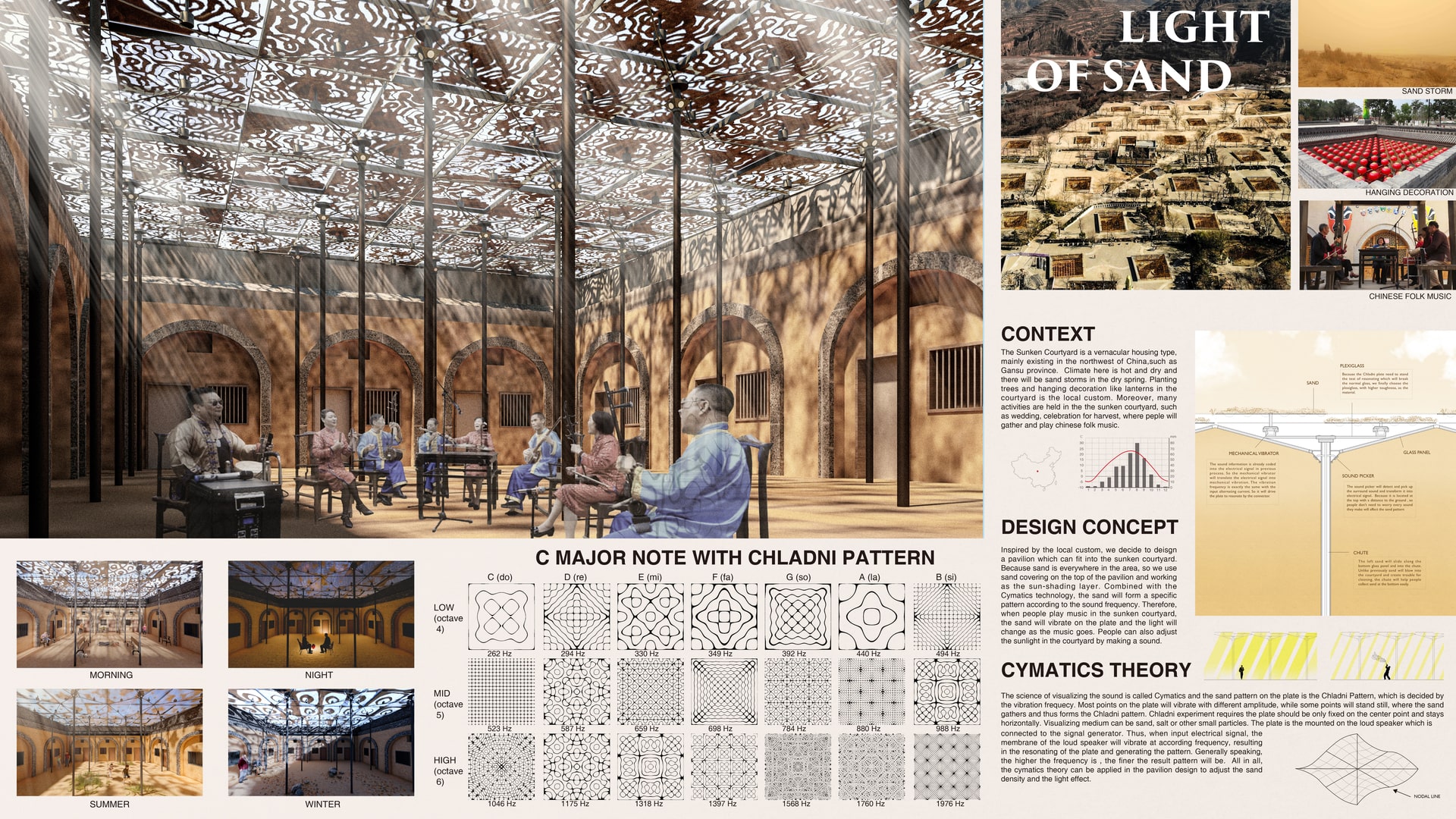Project Description
The Sunken Courtyard is a vernacular housing type, mainly existing in the northwest of China,such as Gansu province. Climate here is hot and dry and there will be sand storms in the dry spring. Planting trees and hanging decoration like lanterns in the courtyard is the local custom. Moreover, many activities are held in the the sunken courtyard, such as wedding, celebration for harvest, where peple will gather and play chinese folk music. Inspired by the local custom, we decide to deisgn a pavilion which can fit into the sunken courtyard. And because sand is everywhere in the area, so we use sand covering on the top of the pavilion and working as the sun-shading layer. Combined with the Cymatics technology, the sand will form a specific pattern according to the sound frequency. Therefore, when people play music in the sunken courtyard, the sand will vibrate on the plate and the light will change as the music goes. People can also adjust the sunlight in the courtyard by making a sound. It also provides a shelter when sandstorm arrives and collect the sand in the air to form sun-shading pattern. The science of this visualizing the sound is called Cymatics and the sand pattern on the plate is the Chladni Pattern, which is decided by the vibration frequecy. Most points on the plate will vibrate with different amplitude, while some points will stand still, where the sand gathers and thus forms the Chladni pattern. Chladni experiment requires the plate should be only fixed on the center point and stays horizontally. Visualizing medium can be sand, salt or other small particles. The plate is the mounted on the loud speaker which is connected to the signal generator. Thus, when input electrical signal, the membrane of the loud speaker will vibrate at according frequency, resulting in the resonating of the plate and generating the pattern. Generally speaking, the higher the frequency is , the finer the result pattern will be. All in all, the cymatics theory can be applied in the pavilion design to adjust the sand density and the light effect. Besides,The left sand will slide along the bottom glass panel and into the chute. Unlike previously sand will blow into the courtyard and create trouble for cleaning, the chute will help people collect sand at the bottom easily. In summary, the project provides a promising aspect where by virtue of cymatics technology, the sound can control the daylight entering building through the most commonly seen material --sand.
